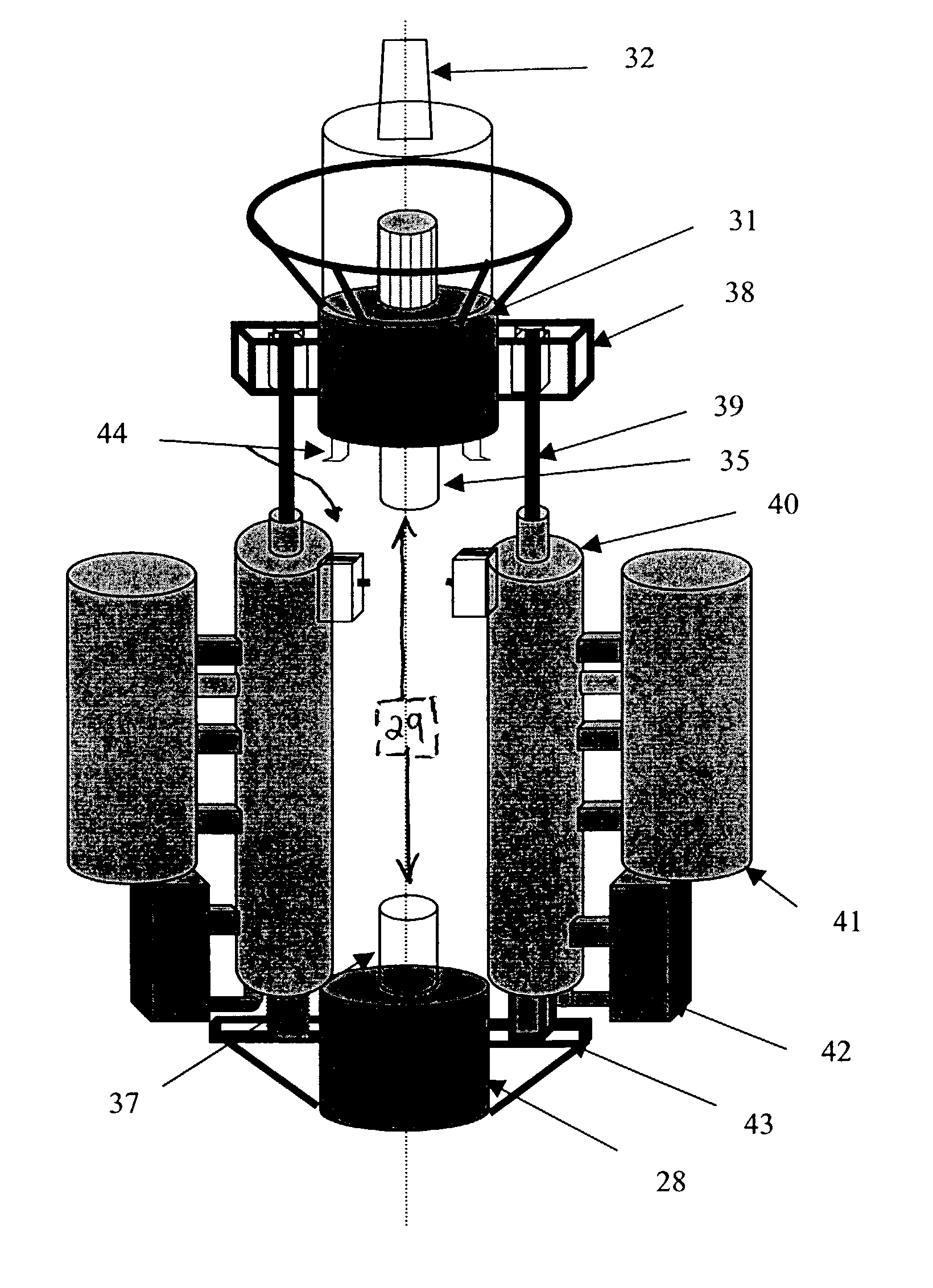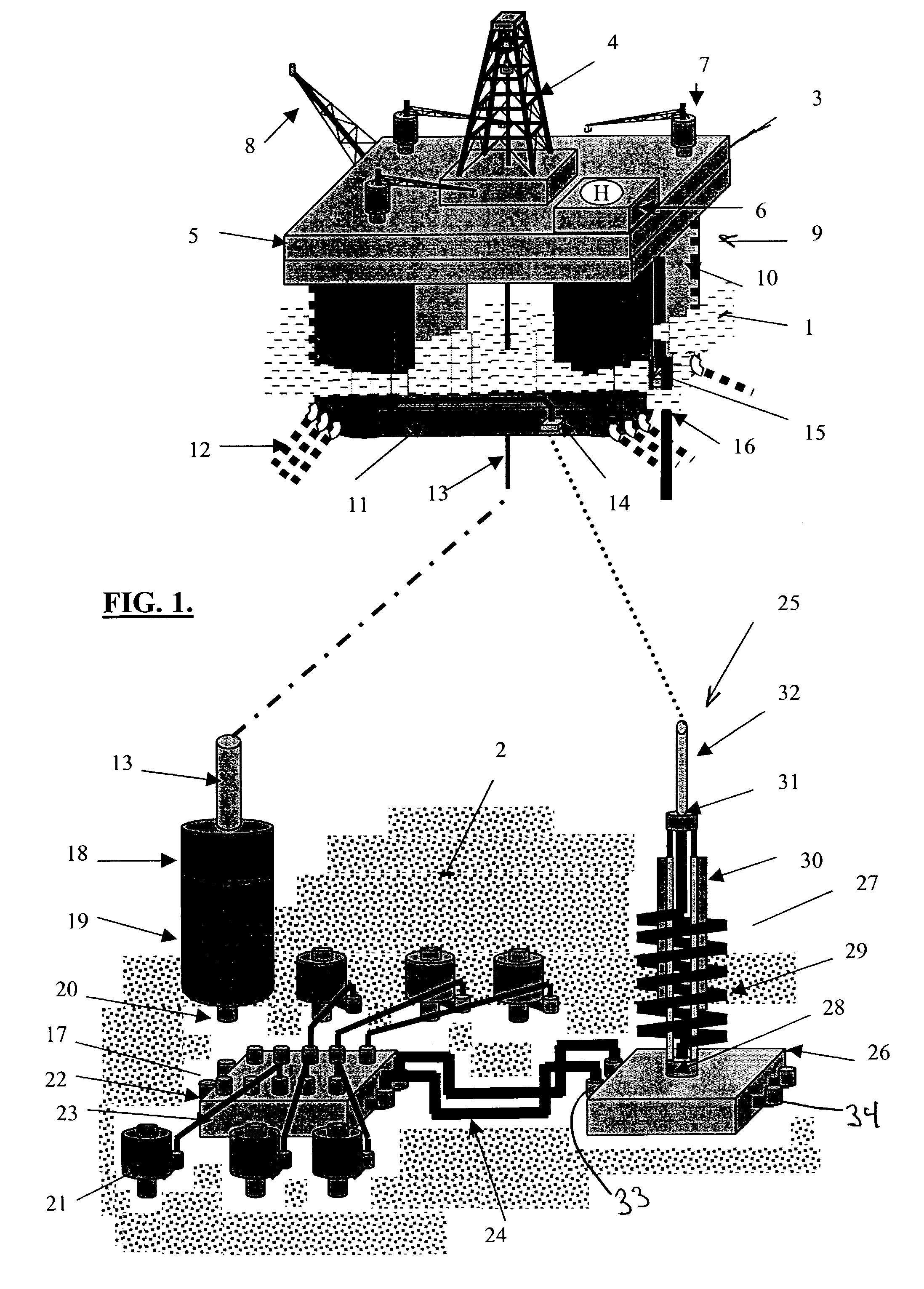Marine bottomed tensioned riser and method
a technology of tensioning riser and bottom, which is applied in the direction of drilling pipes, well accessories, sealing/packing, etc., can solve the problems of tlp still moving laterally, saturating diving, and needing to be positioned properly using pile-driving technology, etc., to simplify the deepwater challenge, the effect of requiring space is readily available and the effect of significant technical benefits
- Summary
- Abstract
- Description
- Claims
- Application Information
AI Technical Summary
Benefits of technology
Problems solved by technology
Method used
Image
Examples
Embodiment Construction
[0037]While this invention is susceptible of embodiment in many different forms, there is shown in the drawings, and will herein be described in detail, one specific embodiment of the invention. It should be understood, however, that the present disclosure is to be considered an exemplification of the principles of the invention and is not intended to limit the invention to any specific embodiment so described.
[0038]Turning to FIG. 1, the invention, and the overall environment of one embodiment of the invention is illustrated. At the upper half of the drawing is shown a Host Facility in the form of a semi-submersible platform and a floating production system 3 Production Drilling Quarters (PDQ). The PDQ comprises a drilling rig 4, topsides 5, crew quarters 6, cranes 7, and an emergency flare 8. The superstructure of the PDQ is supported by columns 10 which are connected to pontoons 11 which are submerged below the surface 1 of the water. The PDQ is positioned by mooring lines 12 whi...
PUM
 Login to View More
Login to View More Abstract
Description
Claims
Application Information
 Login to View More
Login to View More - R&D
- Intellectual Property
- Life Sciences
- Materials
- Tech Scout
- Unparalleled Data Quality
- Higher Quality Content
- 60% Fewer Hallucinations
Browse by: Latest US Patents, China's latest patents, Technical Efficacy Thesaurus, Application Domain, Technology Topic, Popular Technical Reports.
© 2025 PatSnap. All rights reserved.Legal|Privacy policy|Modern Slavery Act Transparency Statement|Sitemap|About US| Contact US: help@patsnap.com



